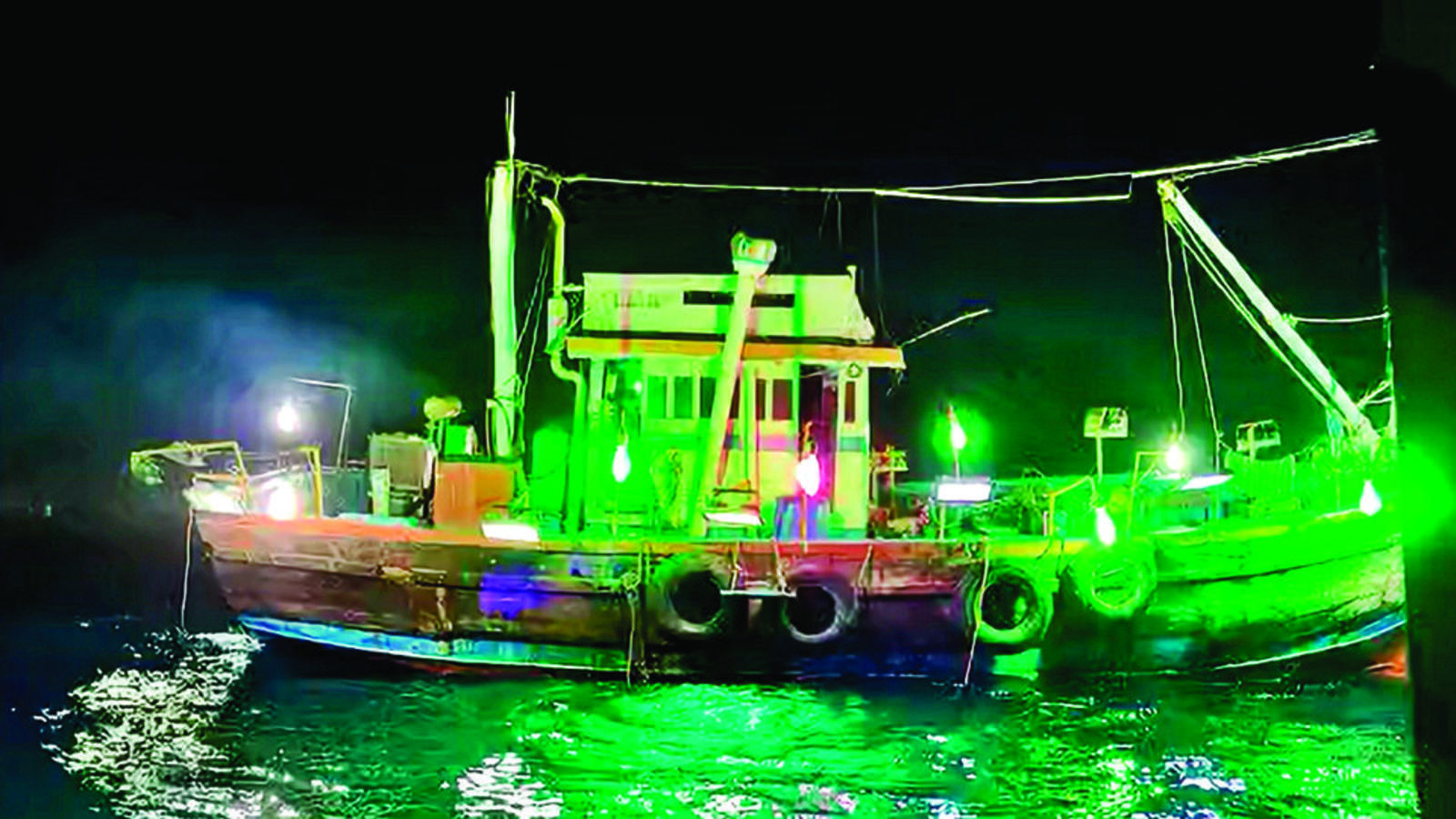Facts for UPSC Mains
Growing Threat of Light Fishing in India
- 01 Apr 2025
- 5 min read
Why in News?
India's 7,500-km coastline, home to rich marine biodiversity and millions of fishers, faces a growing threat from illegal light fishing.
- Despite a national ban within the Exclusive Economic Zone (EEZ) since 2017, weak enforcement has allowed the practice to persist, prompting calls for urgent action to prevent ecological and social damage.
What is Light Fishing?
- About: Light fishing involves the use of high-intensity artificial lights to attract fish and squid to the surface, making them easy to catch.
- Light fishing is prohibited under the National Policy on Marine Fisheries (NPMF), 2017 which aims to protect marine resources and promote sustainability by banning destructive practices like light fishing.
- Impacts: Light fishing leads to the indiscriminate capture of fish, including juveniles, depleting stocks and threatening future populations.
- It also disturbs marine ecosystems, degrading coral reefs. Squid (soft-bodied mollusk), vital to the marine food web, are particularly vulnerable, causing cascading effects on larger predator species and disrupting the food chain.
- Light fishing harms traditional fishers’ catches, especially in states like Andhra Pradesh, Maharashtra, and Kerala.
- Mechanized trawlers using powerful lights create unfair competition, escalating tensions between industrial operators and local communities.
Why is Enforcement of Light Fishing Regulations Weak in India?
- Weak Policy Framework: While the EEZ ban is in place, enforcement within territorial waters (up to 12 nautical miles) is left to states (‘Entry 21’ of the State List in the Seventh Schedule of the Constitution), leading to inconsistency.
- Tamil Nadu and Andhra Pradesh have only partial bans and Maharashtra focuses on trawling rather than light fishing.
- Institutional Capacity Gaps: Coastal Police can only patrol up to 5 nautical miles; light fishing typically occurs beyond this limit.
- Inadequate Penalties: Fines (e.g., Rs 16,000 in Karnataka) are dwarfed by profits (up to Rs 1 lakh per trip), failing as a deterrent.
- Technological Proliferation: Affordable Light Emitting Diodes (LEDs) and portable generator technologies have made light fishing accessible and widespread.
What Needs to Be Done to Address Inconsistent Enforcement of Light Fishing?
- Nationwide Uniform Ban: A comprehensive, enforceable ban on light fishing, aligned with the 2017 EEZ restrictions, should cover all territorial waters supporting the SDG 14 (Life Below Water).
- Integrated Enforcement Mechanism: An integrated enforcement mechanism with multi-agency coordination (Coastal Police, Fisheries Departments, Coast Guard) and shared patrols, alongside satellite tracking (like Earth Observation Satellite-06) will enhance surveillance.
- Collaboration with the Indian National Centre for Ocean Information Services will further strengthen enforcement efforts.
- Economic Transition Support: Under Pradhan Mantri Matsya Sampada Yojana provide subsidies for eco-friendly gear and training in sustainable practices, along with alternative livelihoods like aquaculture and tourism for those moving away from light fishing.
- Global Best Practices: Countries like Japan and Italy enforce seasonal and depth-based restrictions on light fishing.
- India can adopt such adaptive policies to balance biodiversity conservation and economic sustainability.
|
Drishti Mains Question: Discuss the environmental and socio-economic impacts of illegal light fishing on India’s coastal ecosystems and fishing communities. |
UPSC Civil Services Examination, Previous Year Question (PYQ)
Prelims
Q. Which one of the following is a filter feeder? (2021)
(a) Catfish
(b) Octopus
(c) Oyster
(d) Pelican
Ans: (c)
Q. Under the Kisan Credit Card scheme, short-term credit support is given to farmers for which of the following purposes? (2020)
- Working capital for maintenance of farm assets
- Purchase of combine harvesters, tractors and mini trucks
- Consumption requirements of farm households
- Post-harvest expenses
- Construction of family house and setting up of village cold storage facility
Select the correct answer using the code given below:
(a) 1, 2 and 5 only
(b) 1, 3 and 4 only
(c) 2, 3, 4 and 5 only
(d) 1, 2, 3, 4 and 5
Ans: (b)





